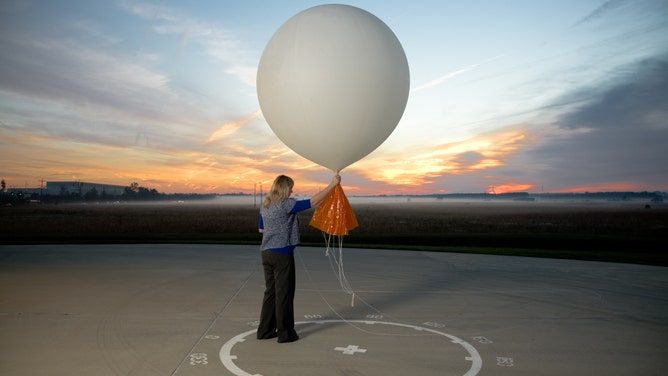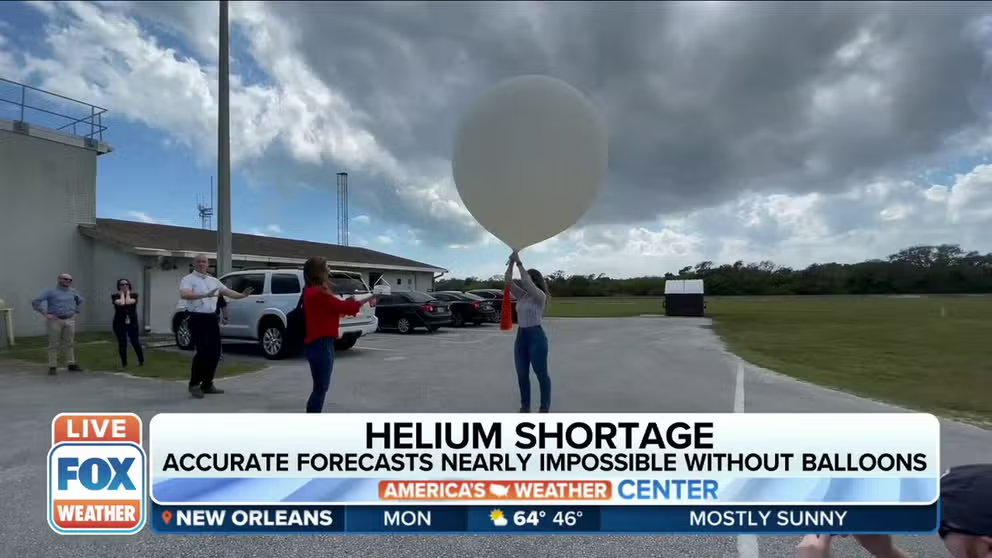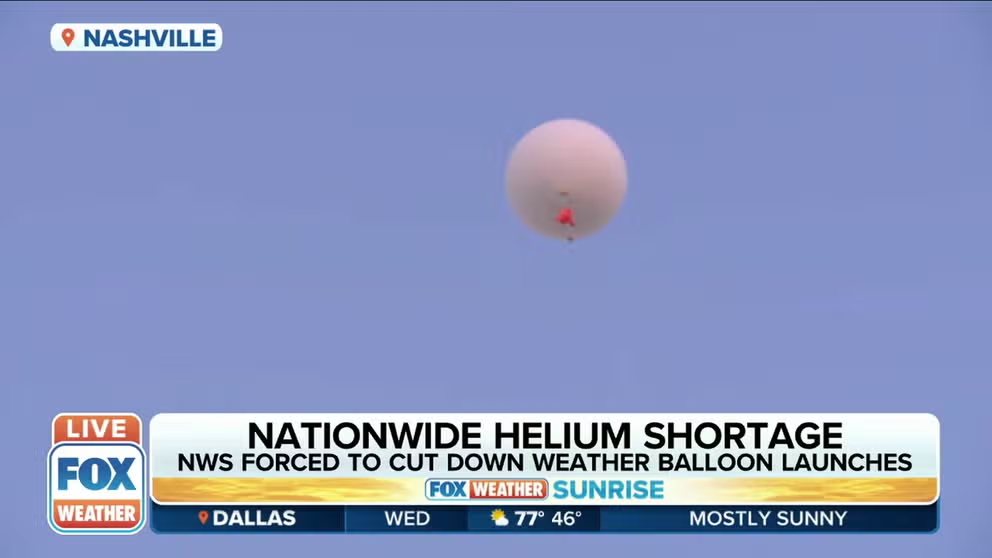Grounded: Denver weather service stops sending up weather balloons amid helium shortage
The National Weather Service in Boulder is one of 12 weather offices that relies on helium as the lifting gas for weather balloons

FILE - A meteorologist releases a balloon attached to weather and altitude recording and transmitting devices.
(Photo by Benjamin C. Tankersley/For The Washington Post via Getty Images / FOX Weather)
BOULDER, Colo. – A helium shortage has forced the National Weather Service office in Boulder, Colorado, to stop sending weather balloons until further notice.
These balloons with an instrument pack called a radiosonde attached are a vital tool that helps meteorologists predict weather conditions, especially during inclement weather.
Officials at The National Weather Service in Boulder said they would no longer launch the twice-daily weather balloons they've been doing since 1956 due to worldwide shortages of helium.
"We didn't get much notice," Jennifer Stark, meteorologist in charge at NWS Boulder, said. "The supplier updates us every week on whether they have helium or not … The contractor is hanging in there with us and helping as much as they can. But basically, without helium, we're unable to make those balloon launches."
NATIONWIDE HELIUM SHORTAGE COULD DEFLATE ACCURACY IN WEATHER FORECASTING
The balloons are actually launched in Denver, about 30 miles southeast of the NWS office. The Denver launching location is in a more populated area, whereas the office in Boulder is more isolated. Stark said for that reason, it is not a quick switch to go to hydrogen, like many of the other National Weather Service offices are doing.
"It would be unsafe in that location in Denver using hydrogen," Stark said. "Hydrogen is flammable."
Stark said they are working with the regional and national headquarters on a solution in the meantime.
Other NWS offices and helium
Out of 122 NWS offices across the nation, 92 of those offices launch weather balloons. NWS Boulder is one of 12 offices that rely on helium to send their balloons floating high into the atmosphere.
"The main plant has gone offline, and that's down in Texas," Stark said. "So that is why it's impacting not only us but other locations."
The other locations that rely on helium include Albany and Upton in New York, Caribou, Maine; Wallops Island, Virginia; Greensboro, North Carolina; Charleston, South Carolina; Key West and Tallahassee in Florida, Salt Lake City, Utah; Las Vegas, Nevada; and Tucson, Arizona.
National helium shortage could impact weather forecasting
The National Weather Service in Tallahassee, Florida, said they will be switching from twice-daily weather balloon launches to once per day in the morning beginning March 1.
Stark said each of the 12 helium-dependent sites has to be evaluated independently for safety before switching to an alternative lighter-than-air gas. She said Wallops Island, Albany, Tallahassee and Upton cannot be considered for conversion to hydrogen.
HYDROGEN IS A CHEAPER OPTION TO FILL WEATHER BALLOONS AMID HELIUM SHORTAGE
"The rest are looking for the potential to convert to hydrogen," Stark said. "Again, they may have to relocate those upper-air launch facilities to make that jump just because of safety," Stark said. "There's probably some states like us that are in a position where they can't convert at their current level."
Will helium return?
Helium is the second most abundant element in the universe, but on Earth, it's rare. Only a limited number of countries produce it.
"It's an elemental gas, so it really can't be manufactured," Stark said.
Stark said that over the years, they've had periodic supply chain issues and don't know whether the current issue will be resolved.
"This is not the first time, but it's the first time that we have really been completely out and have had to suspend launches," Stark said.
Now what?
Launch reduction should not impact severe weather operations or their ability to warn of dangerous storms.
Stark said that due to their proximity to the Denver International Airport, they can use planes to supplement those air launch observations.
"With all of the flights in and out of DIA every year, every day, even some of those have equipment on them and give the same information as the sounding," Stark said. "So, we have access to that data."
Stark said the data from the Aircraft Communications, Addressing and Reporting System, known as ACARS, helps forecasters.
"They're aircraft soundings basically that are – they're creating a profile of the temperature, dew point, pressure, wind direction and speed as they climb in the atmosphere," she said. "Those will go up to about 30,000 feet or so."
That helps forecasters take a snapshot of the atmosphere.
ACCURATE FORECASTS WOULD BE ALMOST IMPOSSIBLE WITHOUT WEATHER BALLOONS
"It's not like we're out a huge piece of the puzzle, and we can't do our jobs without the soundings because we can," Stark said.
NWS forced to cut down on weather balloon launches due to helium shortage
Many offices switched from helium to hydrogen balloons instead of leaving holes in data – but not all offices.
She said that the only times they'll really miss weather balloon launches is when they need to know certain precipitation types come wintertime.
"That temperature profile really helps us discern between freezing rain, freezing drizzle and snow or, you know, even just fog," Stark said.
Stark said that hopefully, by the time they need to start forecasting for snow, they'll have a better idea for the future of their balloon launches.
"I don't know, you know, if we're going to have helium by the time we're getting ready for winter forecasting or if we are still going to be trying to move to hydrogen and have a location identified," she said. "We're still kind of in a little bit of a limbo, but hopefully on our way to making some decisions about the future."

